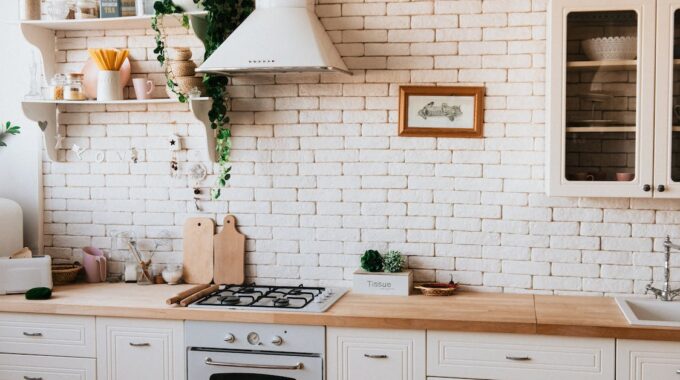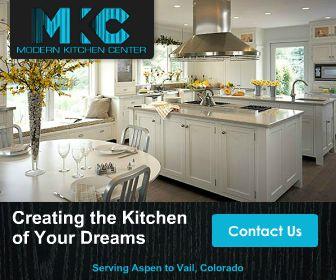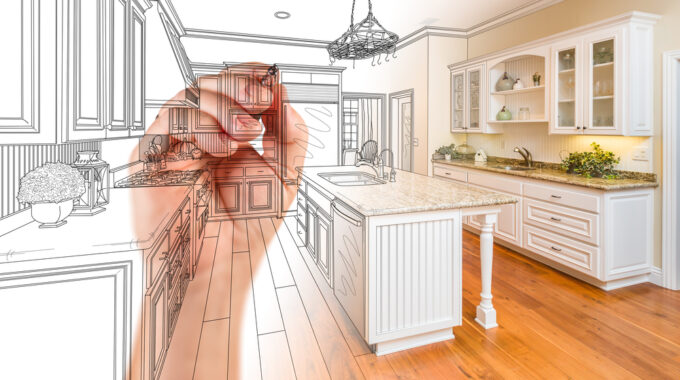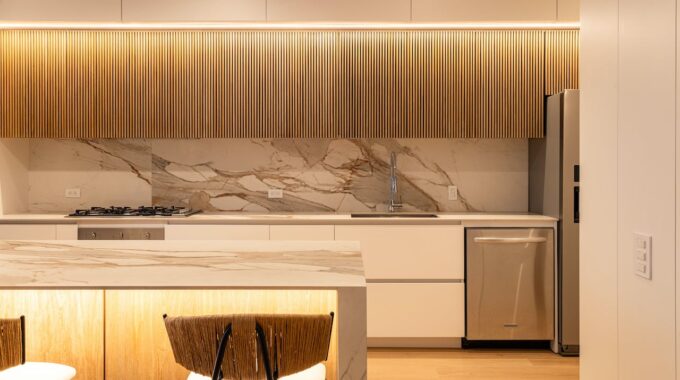
Remodeling Your Sustainable Kitchen: 11 Tips To Follow
Sustainability is quickly becoming a concern and a priority, with more people wanting to find and integrate sustainable solutions in all aspects of life. So it comes as no surprise that there is a high demand for sustainable remodeling and home improvements. One area where you can make a significant impact is in your kitchen, the heart of your home where you cook, eat, and socialize with friends and family. Therefore, remodeling your kitchen with sustainability in mind is a great place to make a positive difference. This is why we have come up with 11 tips to follow when remodeling your sustainable kitchen:
1. Use Sustainable Materials
The first and perhaps most important tip is to use sustainable materials. When remodeling your kitchen, consider using sustainable materials for your flooring, cabinets, countertops, etc. Look for materials that are durable, recyclable, and made from renewable resources. Bamboo is one great example that is an excellent option for flooring. It is durable, recyclable yet fully biodegradable, and also easy to maintain, which is great for any kitchen and homeowner. Another popular option is to use reclaimed materials like wood or salvaged metal from old constructions and projects. Not only will such reclaimed materials help conserve resources and reduce waste, but they also look stunning due to their age and patina, which gives them (and your kitchen) added personality. However, you must be careful when working with reclaimed materials. For example, you may have to check reclaimed wood for warping, mold, and pests, whereas reclaimed metals should be inspected for contaminants like lead paint and radiation. This may sound cumbersome, but no one said sustainability is easy. Fortunately, there are many companies that sell safe reclaimed materials, and you can even consult your kitchen designer about where to source them in your region.
2. Incorporate Natural Light
When you have natural light in your kitchen, you don’t need to consume energy to light up the space during daytime. Natural light is a completely free light source and no kitchen can truly be sustainable without it. Not only is it good for the environment, but it is also good for your health and well-being. Not to mention that a bright, naturally lit kitchen looks stunning all day. When remodeling your kitchen, incorporate as much natural light as possible. Consider enlarging an existing window, adding windows, or even skylights and solar tubes. If you have curtains, window treatments or tints that block natural light, consider removing them.
3. Efficient Design/Layout
When remodeling your kitchen for sustainability, it is important to consider an efficient design or layout. By designing your kitchen with efficiency in mind, you can reduce energy consumption, save money, and create a more functional kitchen space that is easy to use and maintain. Consider how you use your kitchen for an efficient layout. A popular efficient layout is the kitchen triangle, also known as the “working” or “golden” triangle. It refers to a kitchen design/ layout where your refrigerator, sink, and are located in a triangle to minimize the amount of walking you need to do between them while cooking. It saves a ton of time and effort in cooking, making your kitchen more functional, efficient, and sustainable. Moreover, you should consider adding features like a pot-filler faucet, which can help you fill pots with water without having to carry them from the sink to the stove. Not only will it save time, but it also reduces the amount of water you use and spill.
4. Use Non-Toxic Paints and Finishes
When remodeling your kitchen, or any space for that matter, be sure to use non-toxic paints and finishes. Traditional paints and finishes may contain harmful chemicals that can off-gas into your home and affect your indoor air quality. This can be harmful for your home, household, and the environment. Instead, look for paints and finishes that are low-VOC (volatile organic compounds) or zero-VOC, which means they contain fewer or no harmful chemicals. Such paints and finishes are better for your health, sustainable kitchen, and the planet.
5. Sustainable Flooring & Cabinetry
This tips ties in with the first one, which is to use sustainable materials for your kitchen. The flooring and cabinetry are important aspects of a sustainable kitchen that make up most of a kitchen remodeling project. So, using sustainable materials for these parts of your remodel can have a significant impact on your project’s carbon footprint. Look for flooring and cabinetry options that are durable, low-maintenance, and made from sustainable materials. As mentioned earlier, bamboo is the popular choice, mainly because it is durable and renewable. You can also use FSC-certified wood. FSC (Forest Stewardship Council) certification ensures that the wood used in the flooring or cabinets comes from responsibly managed forests.
Cork is another sustainable material option that is both durable and renewable, and it is also comfortable to stand on. Moreover, cork is hypoallergenic, making it an ideal choice for households with allergies or relevant health issues. Of course, you may prefer a more traditional look for your kitchen, in which case you should consider using salvaged or reclaimed wood for flooring and cabinetry. It adds character and history to your kitchen, while repurposing old materials to reduce waste.
6. Install a Water Filtration System
Water filtration systems are often overlooked by homeowners. However, installing a water filtration system in your kitchen is an easy way to reduce your reliance on unsustainable bottled water and help conserve water resources. A water filtration system can remove most of the impurities from your tap water, making it safe and delicious to drink. There are many different types of water filtration systems available, including carbon filters, ceramic filters, and reverse osmosis systems. You’ll have to do some research on the water quality in your region and choose a system that best fits your needs and budget. There are also plenty of DIY water quality tests available online, or you can even send samples to professional laboratories for testing.
7. Overall Water Conservation
Wasting water is one of the worst things for the environment. It is important to conserve water in as many ways as possible, especially in a sustainable kitchen. Apart from installing a water filtration system to reduce the need for bottled water, you can also install a rainwater collection system. It allows you to collect rainwater for things like watering plants, cleaning, or even drinking, especially once you run the rainwater through your water filtration system. Of course, rainwater collection systems only work well in places with rainy seasons. Another way to conserve water is by choosing water-efficient appliances and fixtures for your kitchen remodel, such as high-efficiency (HE) dishwashers and low-flow faucets. They help ensure that you only use as much water as needed in your sustainable kitchen.
8. Install Energy-Efficient Appliances
This tip is fairly straightforward because the less energy you use, the less carbon emissions you contribute to. Of course, you should always opt for renewable energy sources, but sometimes that may not be an option. This is why energy-efficient appliances are a must when remodeling your sustainable kitchen. Such kitchen appliances use less energy, which means lower electricity bills and an overall smaller carbon footprint. Look for appliances with the “Energy Star” label, which indicates that they meet the strict energy efficiency guidelines set by the U.S. Environmental Protection Agency (EPA). Energy Star certified appliances are typically 10-50% more energy-efficient than their standard counterparts. They also consume much less water than regular appliances.
Such efficiency is not only great for the environment, but it can save you hundreds or even thousands of dollars in bills over the life of the appliance. So install energy efficient dishwashers, refrigerators, coffee machines, toasters, etc. for your sustainable kitchen.
9. Install LED Lighting
Apart from natural lighting, an excellent energy-efficient lighting choice is to install LED lighting for your sustainable kitchen remodeling project. LED lights are a convenient and great way to reduce energy consumption and save money on your electricity bill. They use up to 80 percent less energy than traditional incandescent bulbs and they last up to 25 times longer as well. When remodeling your kitchen, you can install LED lighting under your cabinets or as recessed lighting in your ceiling. Another benefit of LED energy efficiency is that they produce less heat, because energy is not being wasted as heat. This means that not only will LED lights save you money, but they can help keep your kitchen cooler in the summer, especially compared to incandescent lights.
10. Incorporate Greenery/Kitchen Garden
Incorporating greenery into your sustainable kitchen design is an excellent way to create a more healthy environment. Lush plants will help improve the air quality and also make for a beautiful looking kitchen. If gardening interests you at all, you should consider a kitchen garden for your remodel. It can provide you with a source of fresh herbs and vegetables for cooking. Consider adding a herb wall or a vertical garden to your kitchen design to maximize space and create a visually appealing, functional, and sustainable feature. If this sounds too complex, speak to your kitchen designer about how it can be done. Alternatively, if a kitchen garden is not for you or in your budget, you can simply incorporate some potted plants or hanging planters to add a touch of much-needed greenery to your kitchen.
11. Reduce Food Waste
Food waste is a major concern for the environment and reducing waste, including food waste, is an important aspect of sustainable living. According to the Natural Resources Defense Council, up to 40 percent of all food goes uneaten and wasted in the US. That is a huge percentage which costs roughly $218 billion each year. It means that the average American family spends roughly $1,500 on wasted food each year. What’s worse is that these costs come from old food prices that do not account for the recent bouts of inflation. When remodeling your kitchen, consider installing features in the kitchen design that can help you reduce your home’s food waste.
For example, you can install a compost bin under your sink or in your backyard, where you can compost your food scraps and other organic waste. This not only helps reduce waste but also provides a source of natural fertilizer for your garden. You can also install a recycling center in your kitchen to make it easy to recycle plastic, glass, and other materials. If you have kids, teach them about the importance of recycling and how to use the compost bin and recycling center.
You can also reduce food waste by planning your meals ahead of time, using leftovers, and buying only what you need. Consider including a chalkboard or whiteboard in your kitchen design to help keep track of grocery lists, meal plans, and recipes. Something as simple as an itinerary for your pantry can help you reduce food waste, because you know exactly what you have, how much of it you have, and when it goes bad, which can help you consume it on time and restock efficiently. These basic things can help reduce food waste and make your kitchen significantly more functional and sustainable.
The Final Word
Remodeling your kitchen for sustainability is an excellent way to make a positive impact on the environment. Using sustainable materials, natural light, energy-efficient appliances, LED lighting, and all the tips mentioned above, you can reduce your carbon footprint and improve your kitchen’s functionality and look, all while saving money on your energy and water bills. Of course, you don’t have to follow all the mentioned tips, but you should try to aim for as many as possible for the most sustainable kitchen in your neighborhood. Ultimately, something as simple as designing your kitchen for energy efficiency and reducing food and water waste can have a significant impact.
If you want to learn about more remodeling tips for a sustainable kitchen, call or visit Modern Kitchen Center and consult with our professional kitchen designers. We can help you achieve the perfect sustainable dream kitchen!








